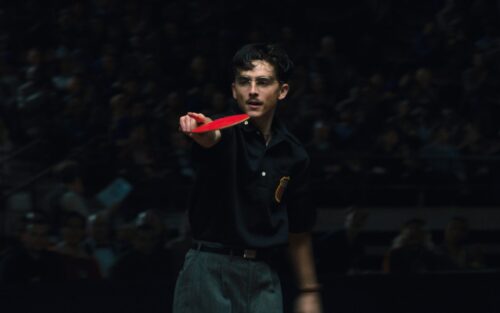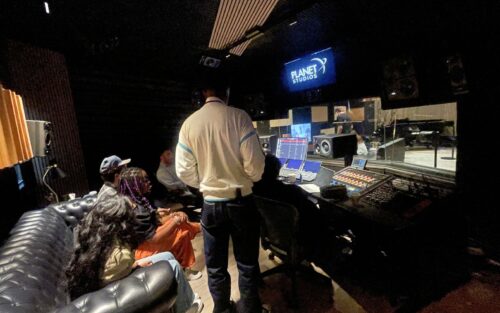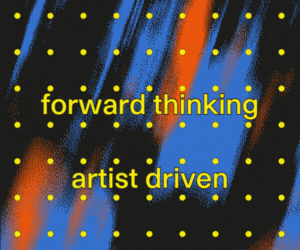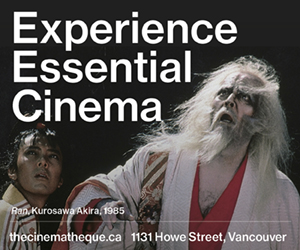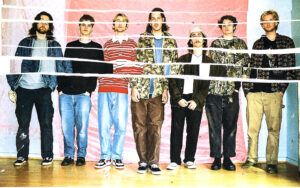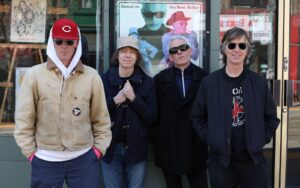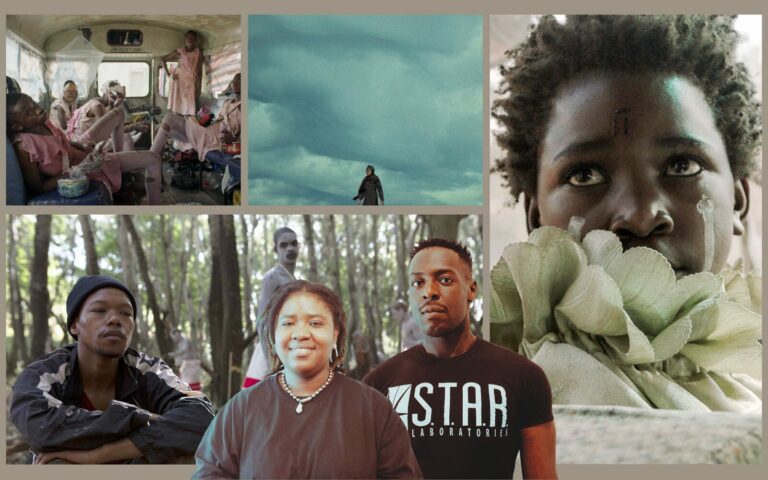
In Conversation: African Cinema Now!
VIFF Centre guest curator Ogheneofegor Obuwoma and Gallery Gachet curator Moroti George discuss a progressive new film series.
by Maggie McPhee
- Published on
Over the next few months, VIFF Centre is hosting a series of films showcasing contemporary African cinema. The films featured in …to glimpse: African Cinema Now! use spirituality as a lens to examine (post)coloniality on the continent, drawing from traditional African folklore and oral storytelling practices while speaking to the current moment. They refuse the Western gaze, embrace magical realism, and imagine new futures.
Guest curator Ogheneofegor Obuwama considers all of her artistic practices — curation, filmmaking, and writing — as storytelling. She works as an assistant curator at The Belkin art gallery and is a curator in residence at ArtSpeak. Lately, her curation focuses on creating language for existing beyond the ongoing disaster of colonialism. She studied Film and Communications at Simon Fraser University and she was drawn to curation for its ability to build community and platform art that people otherwise might not encounter.
Moroti George, who met Obuwama at SFU, is the Director Curator at Gallery Gachet. George arrived at his curatorial practice by way of a deep interest in history and its relationship with visual culture and material reality. The two share an interest in the nuances and interconnections of marginalised people, Blackness, the Other, and the stories that do not get told.
The longtime friends got together to chat about …to glimpse: African Cinema Now! and the themes, practices, and histories present in Obuwama’s programming.
Moroti George: I want to start with the question of African Cinema Now! This title presupposes a history of African cinema that is either being remediated or moved forward or beyond from. Does it have an exclamation mark behind it?
Fegor Obuwoma: Yeah.
MG: So in that sense, it’s kind of like you’re saying African cinema NOW! Why now? What is the state of African cinema in this contemporary juncture? How is it similar or different from historical African cinema?
FO: To address the title, I feel like the ‘now’ was like ’pay attention.’ A lot of times when you go to watch programming, it’s usually older stuff that people have engaged with. Films like Touki Bouki, Black Girl. These are films that defined the canon of African Cinema.
The filmmakers that I’ve programmed as part of …to glimpse are still thinking in these ways and still referencing a lot of these visual elements, because that’s what’s inherent to making films on the continent — trying to put the unspeakable and unfathomable into this visual thing, into film, into art. So this call to look right now is a call to see that while there are these established canons, there’s also this expansion that’s happening.
The films in this series are dreamy, weird. There are so many films being made, so many different genres, and there are so many ways that we can frame African cinema now. Can we see films that we haven’t seen, but are amazing works of art? 2015 was a great year for Nigerian film. So I wanted to see beyond Nigeria and into the continent. What were other filmmakers doing from 2015 to now?
The whole title for this program is …to glimpse: African Cinema Now! While African Cinema Now! is calling us to this moment, …to glimpse is a reminder that these films are not all that there is. It’s not possible for one person or one group of people to know all that is being made and the variety of the stories that are on the continent.

Inxeba is screening at VIFF Centre’s Studio Theatre March 27, 29, and 31 | TICKETS
MG: We went to the same school, SFU, and our film studies class had a small lecture on African cinema that was tied to other cinemas like Third Cinema. That’s when I was introduced to the Touki Boukis and Black Girls of the canon. And I remember thinking, first of all, why are we getting a sub-sub topic? And second, why are these films considered cinema when the things I grew up watching aren’t? Films that actually speak to the nuanced experiences of being in the continent? These films helped me understand that there are different ways visual culture works for different people.
What your programming is doing and what this collaboration with VIFF means is introducing this canon of cinema to a city that’s believed to privilege film and lens-based media, when it privileges film and lens-based media that comes from a particular body that speaks about a particular experience. The title, especially the ‘glimpse’ aspect, is a reminder that, yo, this is not all. You have not even scratched the surface.
FO: What are your thoughts on African cinema, its history, and where it’s at now? What are those relationships that we’ve built from growing up Nigerian with home movies that skirt around the language of magical realities, but still stay within a Western religious canon that becomes expandable and also not? This in-between space is interesting, and it’s where I’m thinking of the spiritual as emerging from — belonging to nothing and encompassing something. Have you felt touched by growing up with film in that way, especially with home movies that are snubbed by film history and theory?
MG: When I was doing my honours thesis in Art History and Visual Culture at SFU, I wrote this essay about how African traditions are present in contemporary Nigeria. A lot of early Nigerian home movies were transcribing traditional Yoruba folklore into contemporary experiences. I’m thinking about the parable of the tortoise and some of these problematic ideas, like the woman who gets too big for her britches, that’s prevalent in movies like Jenifa, a slapstick film about a Nigerian girl who goes to the city and loses her way. Even though these movies were speaking to the contemporary experience they were rooted in folklore.
This is why I’m kinda iffy about the idea of African Cinema being strictly labelled as Third Cinema. A lot of these home movies ascribe, in context and at their core, to the decolonial practices of Third Cinema and the idea of making movies for ourselves and emancipating ourselves through cinema. They aren’t moving towards the decolonial as much as they are touching the pre-colonial, the histories and stories that inspired us.
With spirituality, in-betweenness, and African cinema, it’s funny to me that some Nigerian parents didn’t want us to watch Harry Potter and Twilight because they were like, ‘This is witchcraft!’ But we would watch these films that have serious dead-ass African witchcraft and magic in them, that ascribe to magical realism.

I Am Not A Witch is screening on Wednesday, May 29 at VIFF Centre’s Studio Theatre | TICKETS
As much as there is this idea of spirituality and the Other in the Nigerian imagination, balancing witchcraft with traditional Christian religion, I do feel like a lot of Nigerians have a soft spot for our traditional spiritual practices, which makes them more open to watching it in African cinema, as opposed to a big Hollywood production. There’s a reminder of home there somewhere.
The films you’re showing as part of this series tackle the ideas of spirituality more head-on and in a less “vilified” way than traditional Nigerian home movies. But at the same time, in that “vilified” way there’s still a lesson and a familiarity there, as opposed to an Otherness that we would see if it was a white person depicting African or Nigerian spiritual practices.
FO: I agree! I think about that photography series, Nollywood.
MG: Pieter Hugo?
FO: Yes. The white South African photographer who made this series of photographs off of Nollywood. Anyone who’s watched a home movie can tell there was this call to the weird and uncanny, but not a familiar one. He approached it from this place of the grotesque and the horrible. A lot of Nigerian writers and thinkers actually dislike that series. There’s a difference in the familiarity that these films are able to bring forward depending on who’s watching.
At the same time, I think the problem with home movies is the moral ending. Even though we’re creating this visual language for how to engage with spirituality, magic, and weirdness on screen, at the same time being like ‘Actually don’t do it, this isn’t actually how we want to present ourselves.’
I wanted to program films that weren’t scared of being confrontational or weird in ways that don’t call for a Western understanding. The last film that was shown, This is not a Burial, It’s a Resurrection, thinks about death as something very tangible. And the next film that’s playing, Inxeba, thinks about queer love in terms of community rejection while still understanding its existence within that rejection. And it’s weird. That’s not necessarily the way that a queer person wants to engage with cinema, but it’s the reality that people are facing.
I wanted to pay homage to the weirdness and unfathomability of home movies, while finding a way to remove this need for moral understanding where the West doesn’t have to judge us for casting spells. Everyone loves Harry Potter, but when it’s a witch in the bushes all of a sudden it’s like ‘hmmmm?’
GM: The moral endings present in most Nigerian films when they engage with the metaphysical and the spiritual and all of these big words for witchcraft, people doing witchy stuff. This is why I’m not super insistent that all Nigerian cinema is Third Cinema, neither should it be. Sometimes some of these movies are actually appealing to a white gaze that is not actually present, but is present in the imaginations of the people who are making these films and the imaginations of the societies where these films would be shown.
This leads me to my question about the elephant in the room: colonisation. How do the films in this series tackle colonisation and the development of a national identity? The question of a national identity has been prevalent in my practice for a while, as a Nigerian black queer curator.
Sometimes being a Nigerian queer person is like being stateless. I don’t know if I want to embrace the idea of statelessness because I love being a Nigerian, I just don’t enjoy where we’re at right now. How do the films in this series address the national identity question?
FO: This series examines post-colonisation and ongoing neo-colonisation. The identity building can’t happen apart from that. It’s ingrained in how we build identity. How do we create language for existing beyond ongoing disaster? This disaster being for many people of the Black diaspora: colonisation, the transatlantic slave trade, and urban and global migration forced by capitalism.
When I was thinking about this program, I was thinking about colonisation, the ways it has affected the continent in the past, in the present, and the possibilities of how we might escape in the future. So thinking about an otherwise, how to create language for that while still living in imminent disaster?
But in regards to the films that are showing, I can see the ways that these filmmakers are talking around colonisation. They’re engaging with land and urban migration away from traditional settings to city spaces, either because you have to to gain some upward mobility or because you’re forced to. The Lost Okoroshi, the last film in the program, deals with this idea of being lost in an urban space, with a figure that is an embodiment of culture itself becoming lost in an urban space and then finding that there’s no solution, there’s no place to bring this culture, this person, back to, because it’s so completely changed.
That’s what colonisation does. It destroys reference points. If your reference points are destroyed by disaster that is beyond your control due to capitalism, what comes after? What are you able to create within this feeling of ongoing disaster? That’s what these filmmakers are dealing with.
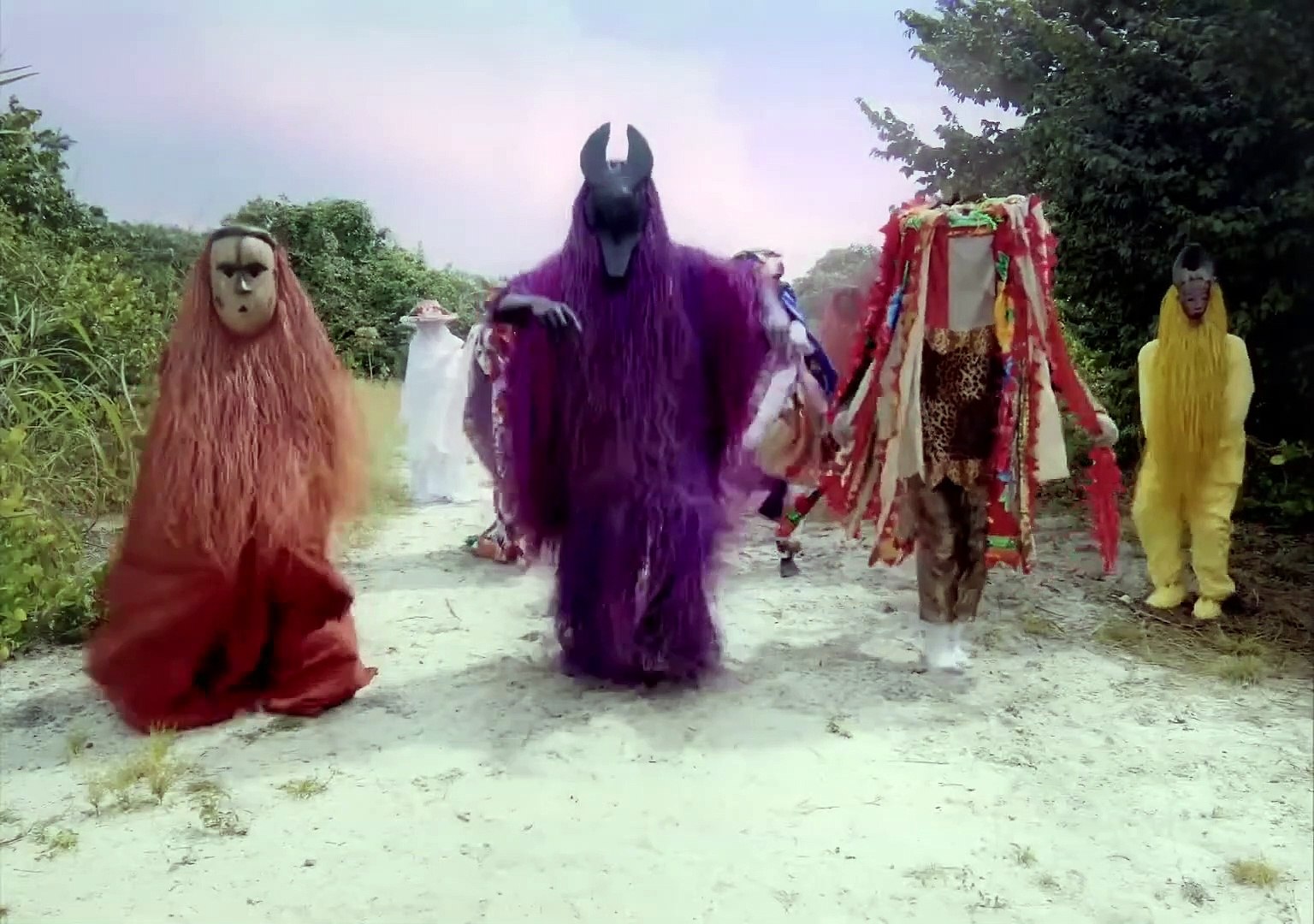
The Lost Okoroshi
In I am Not a Witch, the reason the protagonist is framed as a witch is because her body is being used as a tool of capital, as a tool to create gain. That’s what all these films are skirting around: the lives, cultures, and bodies of people have been irreversibly changed due to the history on the continent. These filmmakers are finding access to culture that they’ve been rejected from either by these acts or by communities that have taken up colonial mandates.
Thinking as a queer person myself about this idea of statelessness, speaking of lost reference points, I don’t know how queer people were treated before colonisation, but I hope there would have been space in my community for me. But then we’re forced into being lost in this global Western structure, having to flee from traditional belief systems that are meant to serve us, into the cause of the problem. We flee directly into the belly of the beast, to then be told, ‘Oh, you’re welcome here, you can be queer here, you can do all the things you want to do here,’ but then become immersed in a culture that actually doesn’t want us to be there. Hence the statelessness, hence the place-lessness and the ongoing in-between state of loss.
This program isn’t just things I’m thinking about. Of course not. Because to reference is to respect the thinking people have done before me about colonisation, capitalism, neo-colonisation happening on the continent, urban and global migration, displacement. In Nigeria we have problems with “brain drain” because the government refuses to sustain the population in meaningful ways. There are all these problems enacting themselves on our bodies and these artists are creating from that position.
MG: I’ve adopted the idea of statelessness and fugitivity and the concept of the ‘Loophole of Retreats’ to think about what it means to be an afro-diasporic person living in the West where I don’t know if I can go home. If I do go home, what parts of myself am I leaving behind? And how is this experience shaping my art?
I remember after we watched This is not a Burial we made this joke that was like ‘Oh, it’s funny how no white person was in the frame but whiteness and its ideas were still in the frame.’ If we’re thinking about the people who are enacting dispossession, the people who refuse to let this woman die, the people who refuse to listen to her, these are the aesthetic remains of slavery and the slave trade and colonization, what Christina Sharpe would call The Wake.
All of these movies are tying themselves to the idea of Wake Work, explaining what it means to be in these bodies and live in this continent that has been ravaged and has seen this enormous disaster occur upon it. How do we continue to live and tell our stories?
FO: I always love to end on a positive note. I’m such a big fan of Afrofuturism. I consider that to be a huge part of my work, thinking about futurisms in general, ideas of the body, of death, the in-between states of being. You know Afrofuturism was coined by a white woman? That’s an elephant in the room at all times! I recently started to think, instead of saying Afrofuturism, what if I started to say Afro-Diasporic-futurisms?
Because I want to imagine a future. I want to imagine that all this work and all this programming and all these films and all this art is taking us towards an otherwise. It’s taking us towards a thing that we don’t know yet, we can’t touch yet, we can’t feel yet, but we know is there. While at the same time acknowledging everything we’ve been talking about: dispossession, destruction, death, all of these things that frame the realities of today. Not to say that people aren’t having fun and loving and living.
If we’re thinking about the diaspora when we think about futurism, then we’re thinking about the fact that we are coming from disaster, but there is something that we’re going towards. We don’t know what it is, we don’t know how it looks, but now we’re thinking, we’re writing, we’re working, we’re making towards a future.
…to glimpse: African Cinema Now! is playing at VIFF Centre through March, April and May. Visit viff.org for more information.
By Glenn Alderson
A deep-listening session reveals how Apple Music’s sonic innovation reshapes the way we hear.
By Cam Delisle
Dominic Weintraub and Hugo Williams take audiences on a treadmill-fueled ride through the chaos and hope of modern life.

